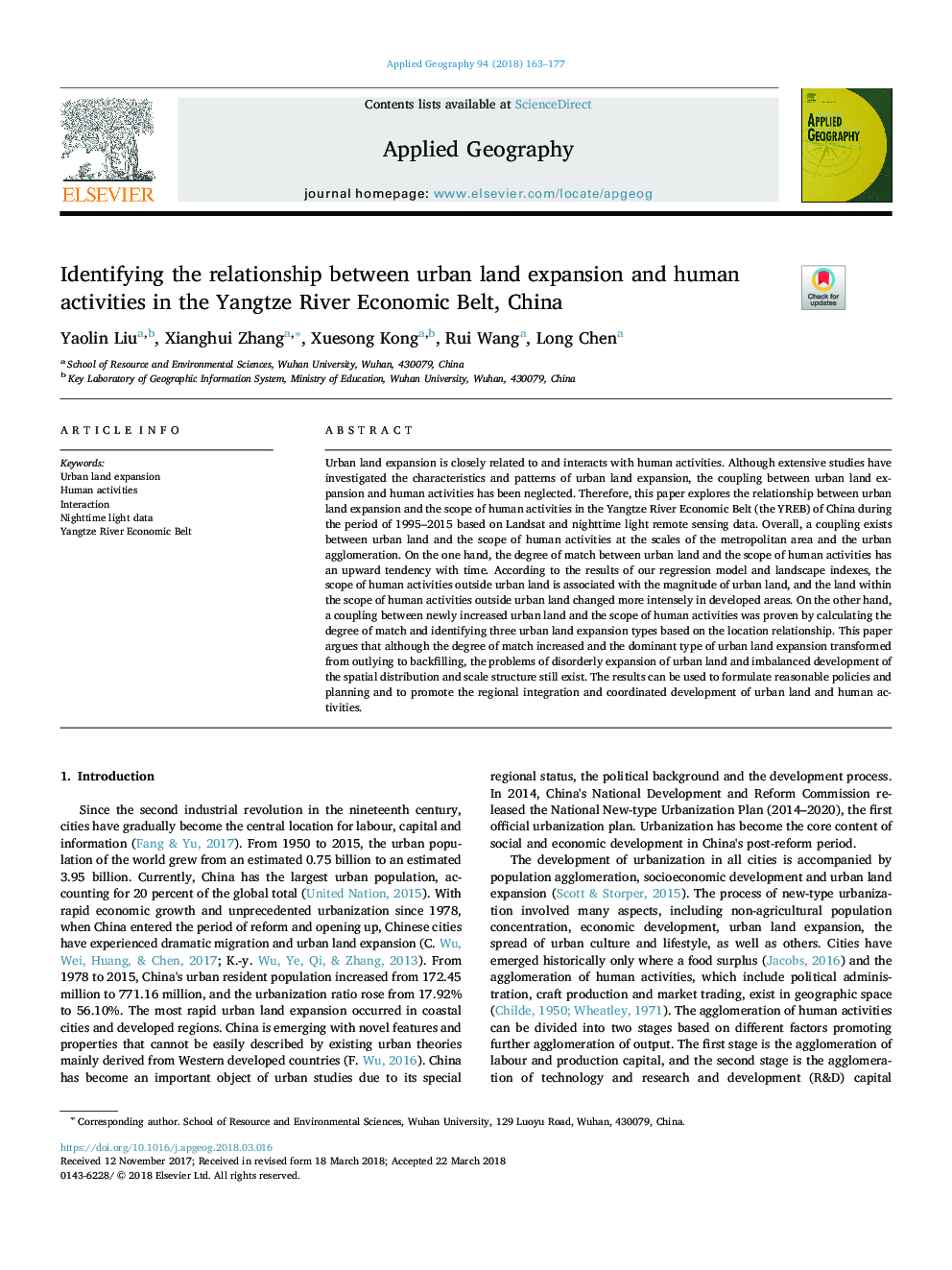| Article ID | Journal | Published Year | Pages | File Type |
|---|---|---|---|---|
| 6538284 | Applied Geography | 2018 | 15 Pages |
Abstract
Urban land expansion is closely related to and interacts with human activities. Although extensive studies have investigated the characteristics and patterns of urban land expansion, the coupling between urban land expansion and human activities has been neglected. Therefore, this paper explores the relationship between urban land expansion and the scope of human activities in the Yangtze River Economic Belt (the YREB) of China during the period of 1995-2015 based on Landsat and nighttime light remote sensing data. Overall, a coupling exists between urban land and the scope of human activities at the scales of the metropolitan area and the urban agglomeration. On the one hand, the degree of match between urban land and the scope of human activities has an upward tendency with time. According to the results of our regression model and landscape indexes, the scope of human activities outside urban land is associated with the magnitude of urban land, and the land within the scope of human activities outside urban land changed more intensely in developed areas. On the other hand, a coupling between newly increased urban land and the scope of human activities was proven by calculating the degree of match and identifying three urban land expansion types based on the location relationship. This paper argues that although the degree of match increased and the dominant type of urban land expansion transformed from outlying to backfilling, the problems of disorderly expansion of urban land and imbalanced development of the spatial distribution and scale structure still exist. The results can be used to formulate reasonable policies and planning and to promote the regional integration and coordinated development of urban land and human activities.
Related Topics
Life Sciences
Agricultural and Biological Sciences
Forestry
Authors
Yaolin Liu, Xianghui Zhang, Xuesong Kong, Rui Wang, Long Chen,
